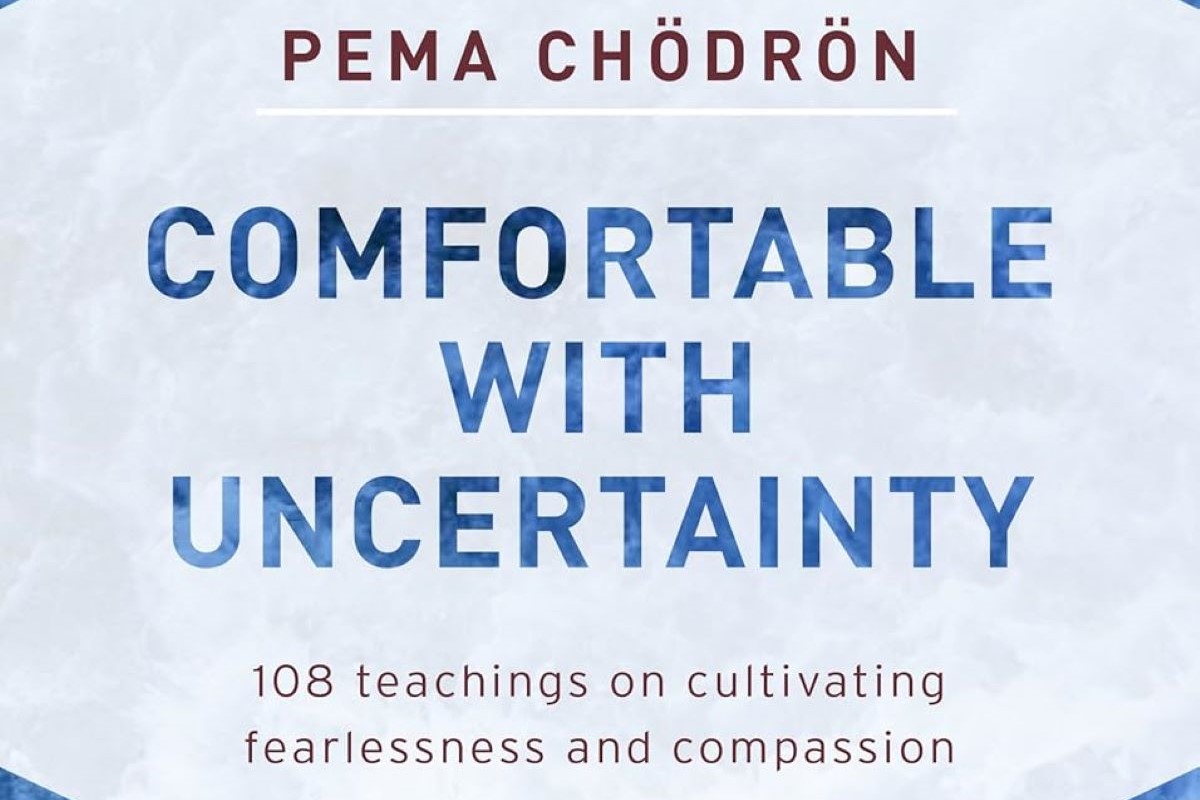If you’ve been practicing breathing meditation, you know how annoying distracting thoughts can be.
They shatter your concentration and make you doubt whether you’re meditating correctly. This is a common problem that everyone struggles with at the beginning of their meditation journey. So, what can you do about it?
While reading Pema Chödrön‘s magnificent book When Things Fall Apart: Heart Advice for Difficult Times, I came across a beautiful passage where Pema Chödrön explains how to deal with distracting thoughts during meditation. In the chapter “Relax as It Is,” she writes:

FREE Self-Test: How Spiritual Are You?
Most meditation techniques use an object of meditation — something you return to again and again no matter what’s going on in your mind. … [In case of mindful breathing], the out-breath is the object of meditation — the elusive, fluid, everchanging out-breath, ungraspable and yet continuously arising. When you breathe in, it’s like a pause or a gap. There is nothing particular to do except wait for the next out-breath.
Then, she mentions her root guru Chögyam Trungpa Rinpoche’s instructions on how to deal with distracting thoughts when they arise:
[When he heard students complain about distracting thoughts], Rinpoche added another refinement to [meditation] instructions. He began to ask us to label our thoughts “thinking.” We’d be sitting there with the out-breath, and before we knew what had happened, we were gone — planning, worrying, fantasizing — completely in another world, a world totally made of thoughts. At the point when we realized we’d gone off, we were instructed to say to ourselves “thinking” and, without making it a big deal, to simply return again to the outbreath.
Then she adds:
Saying “thinking” is a very interesting point in the meditation. It’s the point at which we can consciously train in gentleness and in developing a nonjudgmental attitude. The word for loving-kindness in Sanskirt is maitri [as opposed to metta in Pali language]. Maitri is also translated as unconditional friendliness. So each time you say to yourself “thinking,” you are cultivating that unconditional friendliness toward whatever arises in your mind. Since this kind of unconditional compassion is difficult to come by, this simple and direct method for awakening it is exceedingly precious.
She continues with a beautiful simile for distracting thoughts during meditation:
Thoughts go through our minds all the time, and when we sit [in meditation], we are providing a lot of space for all of them to arise. Like clouds in a big sky or waves in a vast sea, all our thoughts are given space to appear. If one hangs on and sweeps us away, whether we call it pleasant or unpleasant, the instruction is to label it all “thinking” with as much openness and kindness as we can muster and let it dissolve back into big sky. When the clouds and waves immediately return, it’s no problem. We just acknowledge them again and again with unconditional friendliness, labelling them as just “thinking” and letting them go again and again and again.
She concludes by saying that we shouldn’t use meditation to suppress negative thoughts but rather to become comfortable with whatever arises and gently let it go:
Right from the beginning it’s helpful to always remind yourself that meditation is about opening and relaxing with whatever arises, without picking and choosing. It’s definitely not meant to repress anything, and it’s not intended to encourage grasping, either. … You sit down [to meditate] and — wham! — a rather nasty surprise arises. Okay. So be it. This part is not to be rejected but compassionately acknowledged as “thinking” and let go. Then — wow! — a very delicious surprise appears. Okay. So be it. This part is not be clung to but compassionately acknowledged as “thinking” and let go. These surprises are, we find, endless. … So as meditators we might as well stop struggling against our thoughts and realize that honesty and humor are far more inspiring and helpful than any kind of solemn religious striving for or against anything.
About the book’s author: Pema Chödrön is an American Tibetan Buddhist. She is an ordained nun, former acharya (Sanskrit word for “spiritual friend or teacher”) of Shambhala Buddhism, and disciple of Chögyam Trungpa Rinpoche. Chödrön has written several dozen books on Buddhist practice, including Living Beautifully with Uncertainty and Change and When Things Fall Apart.
Complement this article with our guide on how to practice breathing meditation and then revisit Pema Chödrön’s tonglen meditation instructions.

FREE mindfulness resources for stress relief
I’m a freelance writer and mindfulness advocate behind this blog. I started my meditation practice in 2014, and in 2017 I launched this website to share what I learn with others. Here are the three things you can do here:
1. Schedule a free consult if you want to learn Buddhist meditation.
2. Download free mindfulness resources for stress relief
3. Join Patreon for exclusive content and community meetings.








